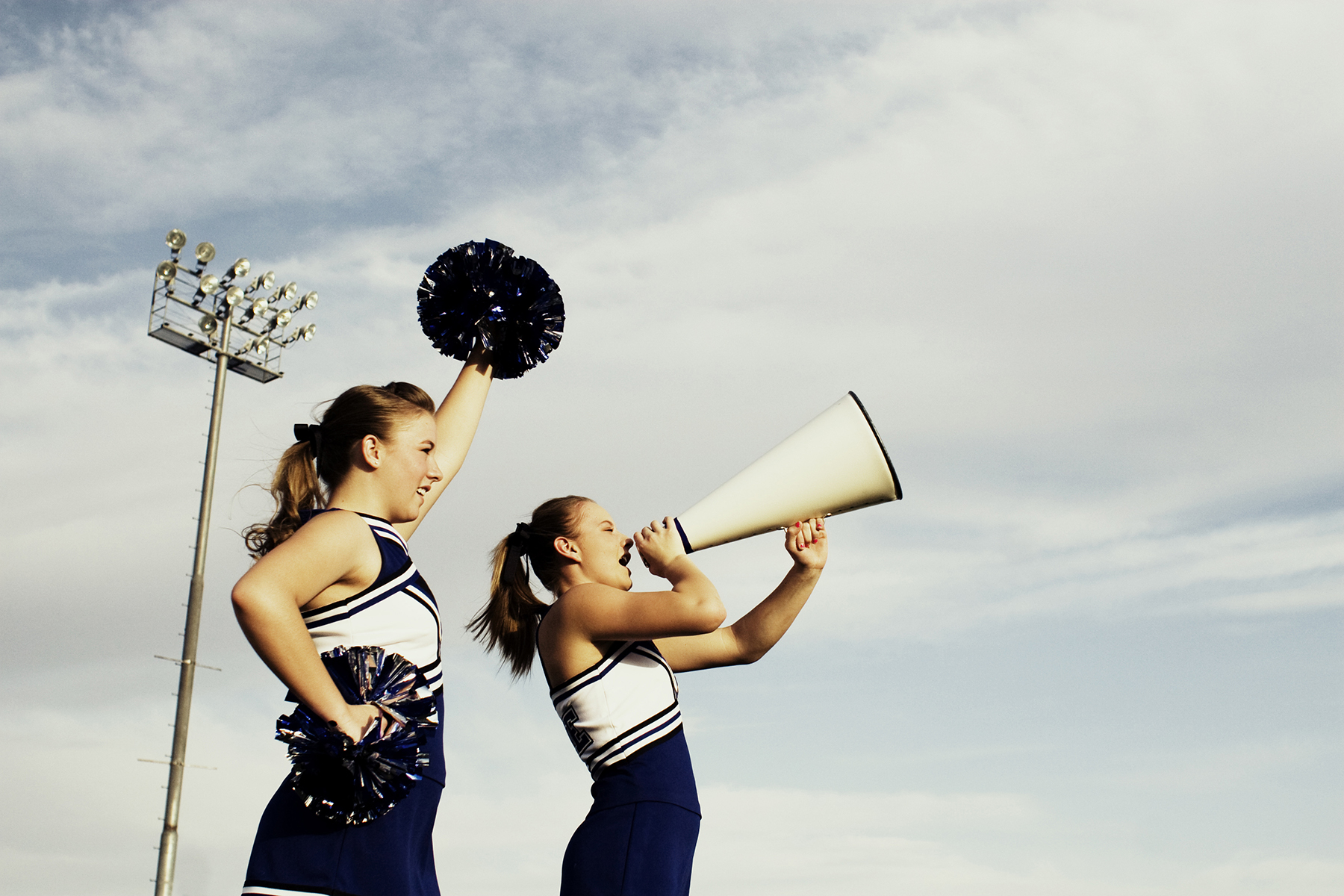Three Cheers for Injury Prevention

Injuries increase as cheerleading enters competitive new era.
Think cheerleaders are less prone to injury? Think again. The girl- (or guy-) next-door has graduated to an athlete in her own right. As the bar raises on technical and gymnastic ability, so does the risk for injuries. While the overall incidence rate is relatively low, cheerleading accounts for about 66 percent of all catastrophic injuries in high school girls in the last 25 years.*
If the idea of watching your child fly through the air gives you gray hairs, consider Dr. Carolyn Kienstra’s advice. “With the proper protocols in place, many injuries are preventable.” A sports medicine physician at the University of Miami Health System, she works with adolescents and UM athletes. She also volunteered her services at the 2016 Olympics.
Whether your daughter is trying out for the first time or already cheering, schedule regular physical exams.
You should also know her coach’s qualifications and background. Certification from the American Association of Cheerleading Coaches and Administrators (AACCA) indicates ability. “A good coach provides supervision, training, a conditioning and strengthening program, and also has safety skills,” Dr. Kienstra says.
With some children starting to cheer as young as age five, she advises parents to ensure that what’s expected of your child is appropriate for their development level and skills. Very young children should focus on gaining skills, not competing.
Parents should also consider the practice facility. Does it have good floor mats and landing equipment? Practice should not take place on dirt, vinyl, concrete or asphalt.
Year-round practice may result in overuse injuries.
For that reason, children and adolescents need one day off per week and two months off per year. Throughout the year, all cheerleaders need downtime with friends and should alternate cheering with activities such as swimming, hiking, biking or yoga.
Higher Body Mass Index (BMI) also increases injury risk. Help your child maintain a healthy weight by modeling good eating habits and providing nutritious meals and snacks.
Even with the best intentions, accidents happen.
Common injuries include:
- Fractures and dislocations are more frequent among 5- to 11-year-olds whose bodies are still developing.
- Bruises, bumps, and hematomas occur in all ages.
- Sprains and strains appear more often in high school and college age cheerleaders.
- Back injuries from lifts, stunts, and tumbling may cause back pain and fractured vertebrae.
- Concussions are less common than in other sports but can happen as girls advance in age and skill level.
Catastrophic injuries – spinal, brain, heat stroke, and cardiac collapse – occur more frequently in cheerleading, from stunts such as tossing and catching a partner, as well as pyramid formations.
Bumps, bruises, and strains benefit from ice and rest.
Sprains and overuse injuries can be evaluated by your pediatrician or family doctor, but fractures and dislocations require immediate medical attention. Often, an urgent care center can evaluate and stabilize the injury before referring you to an orthopedist. Some fractures and dislocations may require Emergency Room (ER) care. Use your judgment and confer with the coach to guide your decision.
A coach who suspects a head injury should perform an immediate evaluation, then send the cheerleader to the ER for an MRI or CT scan. If your child protests that it’s “just a bump”, go to the ER anyway.
Any child suspected of having a concussion should be immediately removed from activity and should continue to rest until they are evaluated by a physician.
According to Dr. Kienstra, there are ways to tell if an injury requires attention. “Anything swollen is a red flag, as is something that causes a cheerleader to slow down or stop doing an activity she usually enjoys.”
What if your daughter or son wants to push through the pain?
“Remind her she needs to rest now and become stronger if she wants to get back to 100 percent and keep cheering in the future,” Dr. Kienstra says.
The pressure to perform and remain upbeat despite fatigue and soreness isn’t easy.
Being an available parent helps protect your child’s physical and emotional well-being.
“Allow her (or him) to openly communicate with you and support her feelings,” Dr. Kienstra says. After all, even cheerleaders need a pep talk now and then.
To learn more, download the AACCA Parent’s Guide to Cheerleading Safety.
Written by a staff writer at UMiami Health News.
*American Academy of Pediatrics
